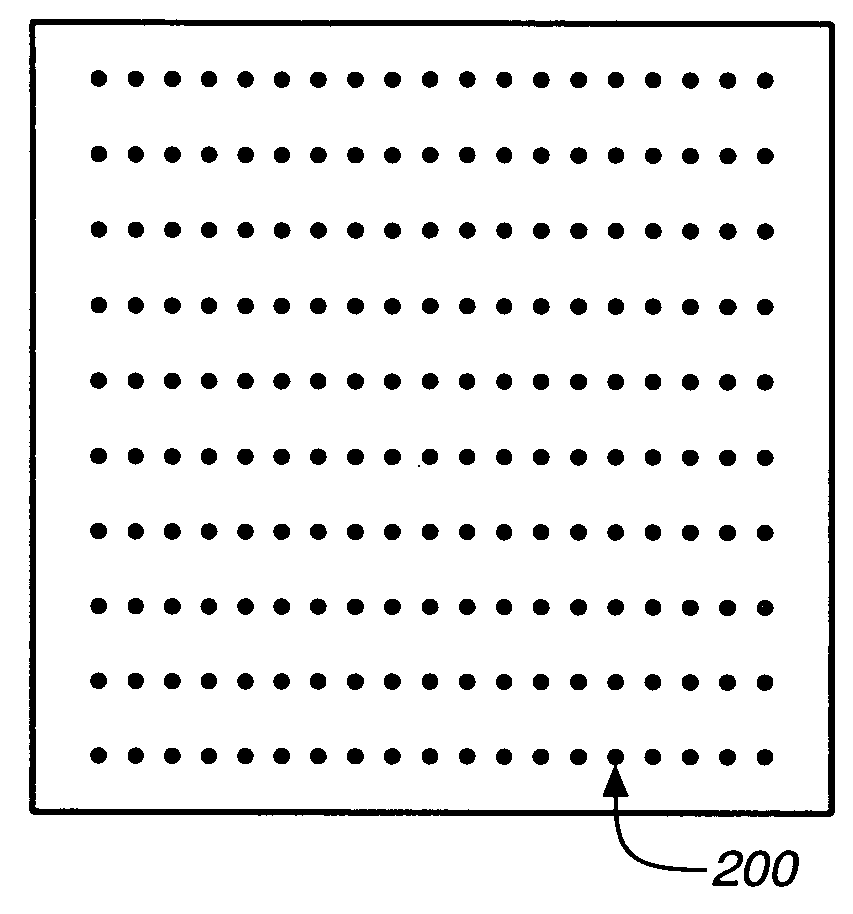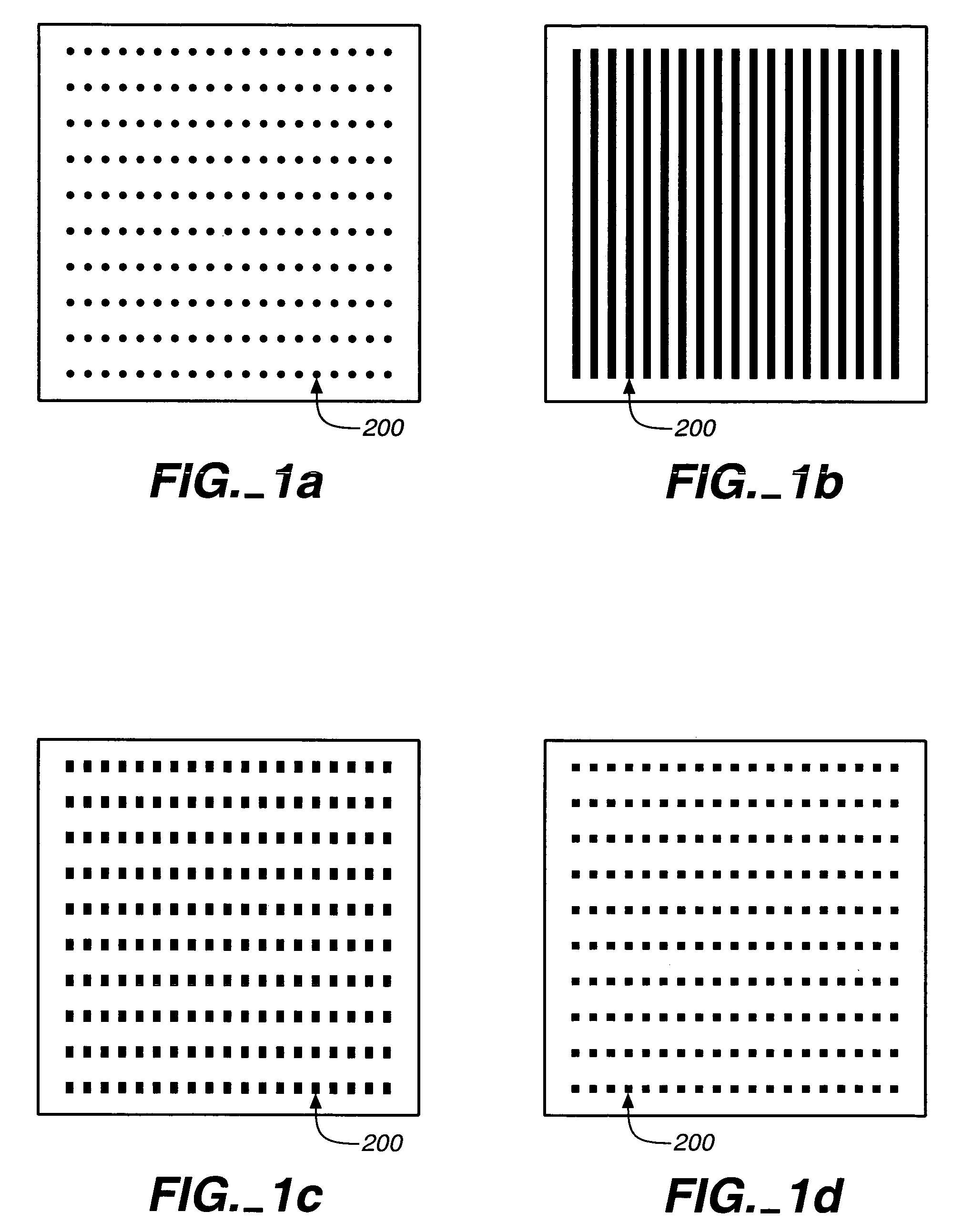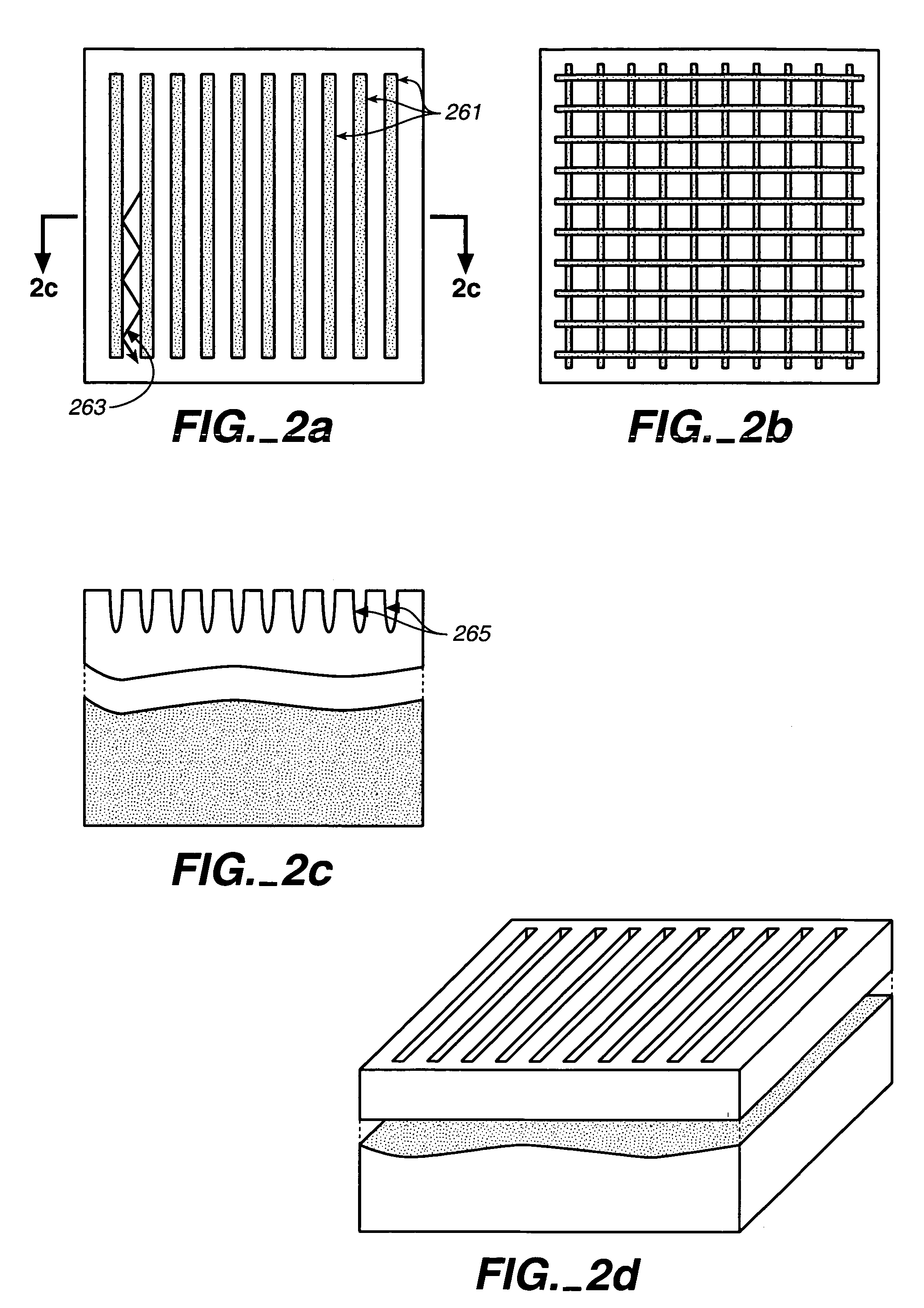High-efficiency light extraction structures and methods for solid-state lighting
- Summary
- Abstract
- Description
- Claims
- Application Information
AI Technical Summary
Benefits of technology
Problems solved by technology
Method used
Image
Examples
Embodiment Construction
[0031] One of the major challenges for wafer bonding process is the selection of a cost-effective carrier with high thermal conductivity and CTE match with that of the LED. To reduce the stress caused by the CTE mismatch between LED and carrier, a low temperature bonding process is preferred. Low temperature solders such as In, Sn, Pb / Sn and Au / Sn are preferred to perform the bonding between LED and carrier. The stress generated between the carrier and LED are relatively low due to the low bonding temperature. The stress can be further released by proper heat treatment after bonding. After wafer bonding, the original substrates such as GaAs and sapphire can be removed by etching or laser lift-off process and only a thin film (a few microns thick) LED structure remains on the carrier. The topside (usually N-side) of the LED can be coated with proper N metal (e.g. Au—Ge for N+ GaAs) using e-beam evaporation or sputtering method. In order to reduce the contact resistance between the se...
PUM
 Login to View More
Login to View More Abstract
Description
Claims
Application Information
 Login to View More
Login to View More - R&D
- Intellectual Property
- Life Sciences
- Materials
- Tech Scout
- Unparalleled Data Quality
- Higher Quality Content
- 60% Fewer Hallucinations
Browse by: Latest US Patents, China's latest patents, Technical Efficacy Thesaurus, Application Domain, Technology Topic, Popular Technical Reports.
© 2025 PatSnap. All rights reserved.Legal|Privacy policy|Modern Slavery Act Transparency Statement|Sitemap|About US| Contact US: help@patsnap.com



